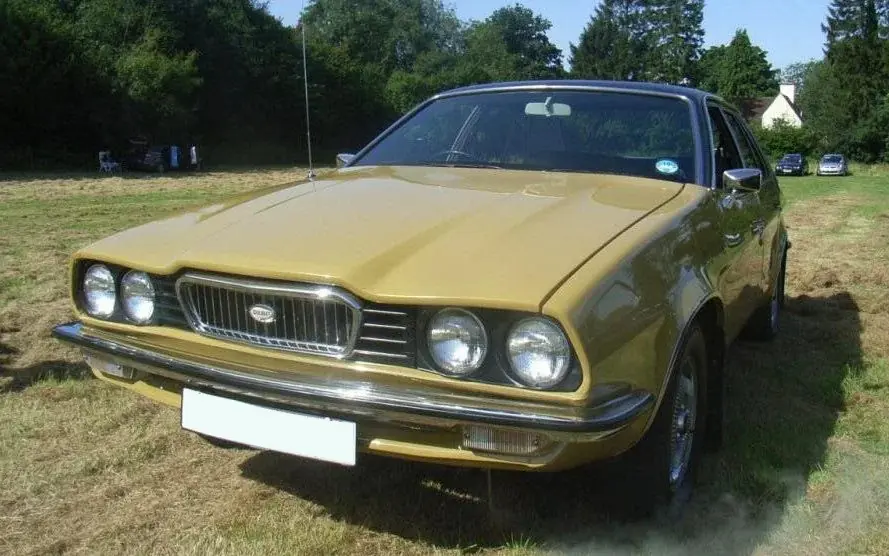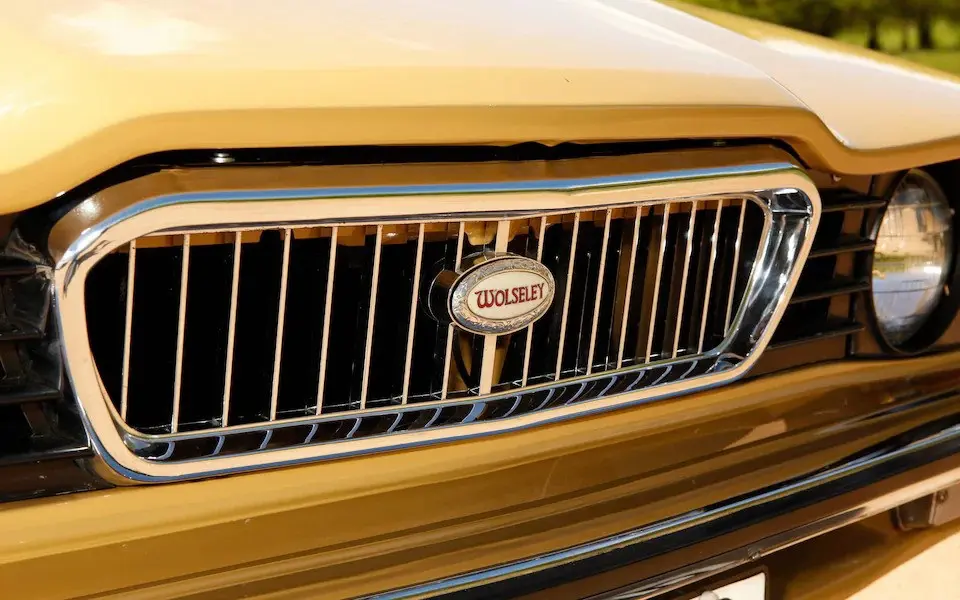ENDING ON A HIGH NOTE – THE LAST EVER WOLSELEY
09 October 2024
Sometimes, the scale of a collector’s fleet means it is necessary to part with a splendid vehicle, such as John Worth’s 1975 Wolseley Wedge: https://www.leylandprincess.co.uk/wolseley1975. A few years ago, I wrote in The Telegraph:
For £2,999 you gained power-assisted steering, tinted glass, a radio, a multi-adjustable driver’s seat and even two cigar lighters. To further reflect the owner’s new-found status, the velour-trimmed cabin resembled the living room of George and Mildred and the roof was clad in the finest vinyl available to humanity.

But I also thought John’s Harvest Gold Wolseley, the flagship of the ADO71 18-22 range:
marked a bold step for one of the most respected names in British automotive history. The illuminated ‘ghost light’ badge had long denoted taste, decency and owners writing stern letters to the local paper denouncing the activities of Teddy Boy gangs. Even in the mid-1970s many Britons still associated the marque with CID inspectors, clanging bells and Edgar Lustgarten intoning “it was here the villain made his fatal error” in a Scotland Yard film. The 18-22 had the genuine potential to re-invent Wolseley’s image for a new generation of ‘professional class’ drivers.

And it was indeed a vehicle of vast potential. Harris Mann’s styling was distinctive and elegant, the specification was lavish, and the Wolseley was a very comfortable saloon. The Wedge offered all the advantages of its Six Landcrab predecessor, with more equipment and an arguably more refined appearance. Charles Griffin, BL’s director of engineering, told Autocar: “We think, with the shape of the ADO71, that we’ve lifted it out of the arguments about whether or not it’s stylish or going to be passé in five minutes.”
The Wolseley was also the sole FWD British car in its class. While not marketed as a sports saloon, The Observer praised how “The road-holding encourages the press-on driver to hustle the car through corners with confidence.” Motor Sport thought it “the finest car to come out of British Leyland since the XJ6” and one that “the British motor industry should be proud of”. They preferred the Wolseley to the Citroën CX 2000, while The Telegraph praised its “dramatically good looking shape that any up-and-coming young executive would be proud to have in the driveway”. In their view the Wolseley was “one of the best things BL has done”.

It looked as though BL had a car for Tony Anholt look-a-like sophisticates on first-name terms with the maître d’hôtel at their local trattoria. But a mere seven months after its debut in March 1975, the Wolseley was no more, as the impact of the Ryder Report on the future of British Leyland saw the Wedge dispense with its separate badges. The 18-22 was to be sold as the Princess while the ghost light passed into automotive history.
Yet, as John remarks, the last Wolseley had the genuine potential to tempt affluent motorists away from their Lancias and Volvos. In 1975 a Mann Egerton dealership chain spokesperson informed the press: “We are being offered Peugeots, Citroëns and BMWs in part exchange for the new car.” Perhaps it is best to say the Wolseley was a victim of BL’s corporate chaos; when the 18-22 debuted, its manufacturer’s issues regularly dominated the press. By the end of 1975, Autocar ranted: “British Leyland once again demonstrated their lack of understanding of the marque names and marque loyalty they inherited when they took over BMC, by killing off Wolseley.”

Happily, a new generation of enthusiasts appreciate the Wedge for its many virtues. BL claimed: “We deliberately created a car to be looked at.” John finds “the young think it is ‘cool’. They have never seen anything like it before, all slanting panels and angles.” Or, as Harris Mann put it: “The car is not a crib of anyone else’s.” Absolutely:
With thanks to: John Worth and https://www.leylandprincess.co.uk/.
